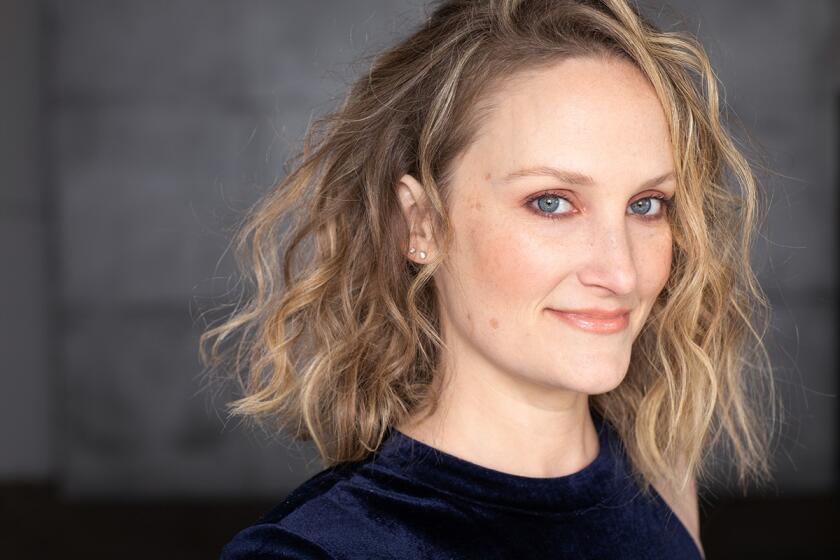Annie Ernaux caps a remarkable stretch of unorthodox memoirs with âThe Yearsâ
Annie Ernaux is ruthless. I mean that as a compliment. Perhaps no other memoirist â if, in fact, memoir-writing is what Ernaux is up to, which both is and isnât the case â is so willing to interrogate not only the details of her life but also the slippery question of identity. Beginning with her first book, âCleaned Outâ (published in France in 1974), Ernaux has worked a territory similar to that of Sophie Calle and Patrick Modiano, using memory and observation less as comfort than as the mechanism through which experience is revealed to be conditional, even imposed.
âOnce an hour I do exercises,â she begins âCleaned Out,â which recounts an abortion she had as a university student, âpedaling scissors, sit-ups with my feet against the wall. To hurry things up.â To call this writing unsentimental is to minimize what Ernaux has in mind.
âNo lyrical reminiscences, no triumphant displays of irony,â she announces in âA Manâs Place,â which came out in 1983 and uses the story of her fatherâs life and death to trace her slow (non)acclimatization to the inevitability of his loss. âThis neutral way of writing,â she explains, âcomes to me naturally. It was the same style I used when I wrote home telling my parents the latest news.â
âThe Yearsâ is not Ernauxâs story, or not her story alone. Rather, it uses the circumstances of her life as a template to uncover larger commonalities.
What we are seeing is writing as excavation: âa cut below literature,â as she puts it in âA Womanâs Storyâ (1988), although that has more to do with the contrivance of storymaking than any lack of artistry. âNaturally,â Ernaux reminds us, âthis isnât a biography, neither is it a novel, maybe a cross between literature, sociology and history.â
Something similar might be said about âThe Years,â which was published in the United States in November, although it has been available in France since 2008. Here, Ernaux opens up her sensibility in a variety of ways, while also remaining consistent to the vision she has nurtured all along.
At 230 pages, âThe Yearsâ is longer than any of Ernauxâs previous books. (Both âA Manâs Placeâ and âA Womanâs Story,â by contrast, come in at less than 100.) The prose is also less epigrammatic than in those works â a return, in some sense, to the fuller language of âCleaned Out.â
And yet, itâs impossible to read âThe Yearsâ without being aware of the author, now 77, moving forward, challenging herself even as she challenges us. âAt times,â Ernaux writes, âshe feels weighed down by the quantity of her learning. ⌠She dreams of writing in a language no one knows.â
Annie Ernaux is ruthless.
The âsheâ in that sentence is Ernaux herself â one of the stylistic innovations of the work. Throughout âThe Years,â first person singular is never used, even when the author is describing intimate events. Instead, Ernaux relies on a shifting flurry of pronouns: she, we, one. They blend and blur, sometimes within a single paragraph, to create a kind of intelligence or point of view that is universal and particular at once.
On the one hand, this goes back to her intention in books such as âA Manâs Placeâ and âA Womanâs Storyâ: to strip away the primacy of the personal, even (or especially) when describing personal affairs. The idea is to obliterate the self â or no, not to obliterate it exactly, but to examine it through the lens of its exteriors.
In that regard, the conceit at the center of âThe Yearsâ is that none of us is unique or special, even as (of course) we are. Personality is determined by where and when we come from, by a complex matrix of familial or cultural obligation and social possibility. At the same time, how can we ever step outside ourselves with any authority?
â[I]t is with the perceptions and sensations received by the spectacled fourteen-and-a-half-year-old brunette,â Ernaux notes, describing a photograph from adolescence, âthat this writing is able to retrieve something slipping through the 1950s, capture the reflection that collective history projects upon the screen of individual memory.â That the âspectacled fourteen-and-a-half-year-old brunetteâ is (again) a version of the author is both the most obvious and the most revolutionary aspect of the text.
For Ernaux, photographs are central to the construction of her narrative â as much for their illusions as for what they reveal. She builds âThe Yearsâ around such images, as well as meals: commemorations and communal gatherings, the structures by which we arrange our lives.
What Ernaux is saying is that time takes everything, that all the things we thought were important turn out to be fleeting, as do we ourselves.
Itâs a brilliant strategy, not least because it encodes the notion of the collective, of the shared experience, into the marrow of the book. This is essential, because âThe Yearsâ is not Ernauxâs story, or not her story alone. Rather, it uses the circumstances of her life as a template to uncover larger commonalities and concerns.
Beginning in 1940, the year she was born in Lillebonne (her family later moved to Yvetot, where her parents ran a cafĂŠ-grocery store), Ernaux describes the privations of the postwar period, and then the relative consumer comfort of the 1950s and the 1960s, as well as the class mobility (and dislocation) offered by education, material she has also explored in other works.
âWe read âThe Female Eunuchâ by Germaine Greer, âSexual Politicsâ by Kate Millet, âStifled Creationsâ by Suzanne HĂśrer and Jeanne Socquet,â she writes of her exposure to the literature of the womenâs movement, âwith the mingled excitement and powerlessness one feels in discovering a truth about oneself in a book.â
Later, she turns the tables on herself and her generation, describing both a distrust of and immersion in capitalist consumption: âAnd we who were undeceived, who seriously examined the dangers of advertising with our students ⌠bought a stereo, a Grundig radio-cassette player, and a Bell & Howell Super-8 camera. ⌠For us and by us, consumption was purified.â
The point is not to justify but to implicate, to show how a generation that imagined itself immune, or different, turned out to be not so different after all.
âAt holiday lunches,â she tells us, âreferences to the past were few and far between. For the younger people there seemed no point.â For the younger and the older people too. What Ernaux is saying is that time takes everything, that all the things we thought were important turn out to be fleeting, as do we ourselves.
âWhen images of [her old] life,â she reflects, âcross her mind ⌠she asks, âWould I like to be there now?â She wants to say no, but she knows the question is meaningless, that no question related to things of the past has meaning.â
Here, we have the core of Ernauxâs project â that nothing has meaning, not in any lasting way, which is it means so much. This has been her subject from the outset: the tension between subjectivity and experience, the distrust of literature, of sentimentality, in favor of something more direct. Such a tension is encoded in her sentences, with their rigorous self-examination, their refusal to fall back on sustaining pieties; this is work that wants to address reality as it is. That such a gesture is impossible, that we are always under the influence of our minds, our beliefs and our perceptions, is part of the point.
âThis will not be a work of remembrance in the usual sense,â Ernaux cautions in the closing pages, referring to the text we have just read. â⌠It will be a slippery narrative composed in an unremitting continuous tense.â The same, of course, could be said of consciousness, which is the real subject of her books. Think of âThe Years,â then, as memoir in the shape of intervention: âall the things she has buried as shameful and which are now worthy of retrieval, unfolding, in the light of intelligence.â
Ulin is the author of âSidewalking: Coming to Terms With Los Angeles.â A 2015 Guggenheim Fellow, he is a former book editor and book critic of The Times.
âThe Yearsâ
Annie Ernaux
Seven Stories Press, 256 pp., $19.95
More to Read
Sign up for our Book Club newsletter
Get the latest news, events and more from the Los Angeles Times Book Club, and help us get L.A. reading and talking.
You may occasionally receive promotional content from the Los Angeles Times.








